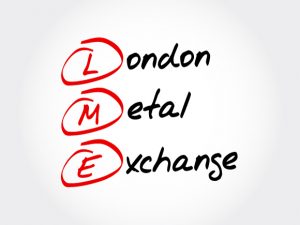Is the LME running out of metal?
The headline poses a rhetorical question — we can all see the rundown in LME inventory this year.
However, the question is intended to raise two issues.
First, while in many cases analysts will point to falling inventory levels as a reason for rising prices, the current ultra-low levels of LME stocks support the point we have always made at MetalMiner: there is little direct correlation between inventory and prices.
Indirect? Yes, but falling inventory does not automatically suggest prices will rise. Today’s base metal prices are nearly all off peaks seen in Q3 despite even lower inventory levels on the LME.
Second, point covered by an interesting article in Reuters this week explores why inventory levels are so low and what steps, if any, the LME can do about it.
Want MetalMiner directly in your inbox? Sign up for weekly updates now.
Demand surges put strain on supply chains
The “why,” is as so often the case with base metals, is in large part due to China.
But while resurgent demand in the world’s largest consumer is certainly a part of the problem, demand elsewhere is also significant. A global rush to restock supply chains has put base metal supply under extreme duress. Overlaying that has been a highly constrained and chaotic global shipping market. Sky-high rates are not just delaying shipments but dissuading the normal flow of metal that would restock or resupply regions in response to arbitrage price differences.
Finally, in the second half of this year we have seen considerable disruption in China due to power constraints. Some of that has been self-induced by Beijing. However, some has come as a result of coal supply following flooding in some regions and earlier hydroelectric power supply rationing due to drought.
The post reports total registered LME inventory has fallen by almost 600,000 metric tons since the start of the year. Stocks of all metals stand at 1.469 million tons, the lowest since 2008. The visible draws have been complemented by an even bigger reduction in LME shadow stocks, those defined as positioned explicitly with the option of LME delivery so often in adjacent warehouses. Those slumped by 64%, or 1.21 million tons, over the first nine months of 2021.
Aluminum impact
The largest metal by volume is aluminum, where combined on- and off-warrant inventory fell by 1.13 million tons over January-September and a lot more metal has left the on-exchange tally since then, Reuters reports.
China has imported considerable quantities against the backdrop of an already tight global market. Just look at what U.S. Midwest premiums have been doing this year to assess the tightness of the U.S. market.
Nor is aluminum the worst affected. Registered LME lead inventory of 53,700 tons is down by 60% on the start of the year and close to last month’s multiyear low of 48,175 tons, the post states. Stocks in Europe have fallen sharply — exacerbated by a smelter outage — are still draining away. European locations hold just 12,325 tons with a minimal 234 metric tons sitting in shadow storage at the end of September.
Worse, there is no lead at all at U.S. locations!
Tin, copper — they are all facing the same problem, largely for the same reasons outlined earlier.
Returning to normal — when?
Is there an end in sight?
Well, not until the global logistics market returns to some form of normality, in Reuters’ opinion, allowing the movement of metal from areas of plenty to areas of distress at economic freight rates.
An easing of power constraints in China will help. However, a tight winter coal supply market will likely delay a return to normal there before late Q1.
Meanwhile, the LME is taking steps to prevent any one party cornering the market. Just $26 million is said to be all that would be required to buy up the remaining inventory for tin, for example, and has already stepped in to control the copper market. The exchange appears ready to take further measures to maintain an orderly market, if necessary.
Over more than 100 years, the LME has lived up to its reputation as the market of last resort. However, few of those years have seen it quite so tested in that role as 2021.
Cut-to-length adders. Width and gauge adders. Coatings. Feel confident in knowing what you should be paying for metal with MetalMiner should-cost models.



Leave a Reply